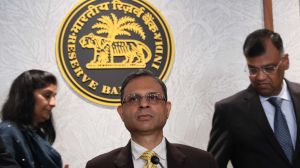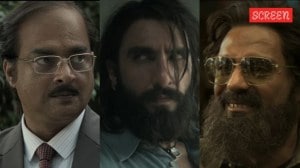The Mean World Syndrome?
I cried a long time on my hotel bed that night, thinking about their faces. So many children — 14, 15, 16 years old — drawn tight with grief and exhaustion.

I cried a long time on my hotel bed that night, thinking about their faces. So many children — 14, 15, 16 years old — drawn tight with grief and exhaustion.
It was Tuesday, April 20, 1999, and two boys had just killed 12 classmates and a teacher at Columbine High School here in this Denver suburb. I had attended an evening prayer service, listening to students whisper their fragments of fear: “He was shot twice. In the back.” “Right in front of me.”
I wanted so much to hold my 11-month-old baby, my Hannah; to keep her home, safe, forever. In the years since, I felt that same shakiness with each school shooting I covered. In each city, on each campus, the same empty words echoed: It’s a senseless tragedy. Our hearts are broken. We never thought it could ever happen here.
So why did it happen, time and again? There had to be answers. I sought assignments that would bring me close to those who might.
I drank iced tea with the mother of Mitchell Johnson, who, at age 13, ambushed his classmates in Jonesboro, Arkansas, killing five on a spring afternoon. I followed a guard through the clanging doors of the Kentucky State Reformatory to sit in a bare room with Michael Carneal, who killed three high school classmates in West Paducah, Kentucky. Over the years, I have asked the same questions to so many.
On Friday, the day after a graduate student killed five in a geology class at Northern Illinois University, I went back and read those old stories, seeking answers, hoping for something more than “senseless”.
When Johnson and his friend Andrew Golden killed four children and a teacher at Westside Middle School in 1998, the families of Jonesboro also reached for explanations. They searched for warning signs they may have overlooked, and found a few: Mitch had a quick temper; he was once suspended for fighting.
But his mother said that was not the Mitch she knew. He sang for elderly shut-ins with his church choir; he rocked his little sister to sleep every night; he was kind; he got good grades.
Sometimes, of course, the warning signs are clear — at least in hindsight. Seung-hui Cho, who killed 32 at Virginia Tech last spring, alarmed some professors and classmates with intimidating glares and dark, violent writings.
But others defied explanation. “You want to look for a pattern, but the deeper you look, the less specific it gets,” said Jeffrey Sprague, co-director of the Institute on Violence and Destructive Behaviour at the University of Oregon.
Some of it might be today’s culture, what Sprague called “mean world syndrome”. Kids see cruelty in movies and video games — and, too often, on the news every time there’s a rampage in a church, a mall, a school. If they’re already a bit unbalanced, “that can become their reality,” Sprague said. “They will pick up on those cues… it becomes something they want to do themselves.”
Guns are widely available. That’s a factor, certainly. In many families, both parents work and have less time to watch kids. That could be a factor, too. As could the high divorce rate. Pressure to succeed in school.
Only one in three children with mental disorders get treatment, according to Patrick Tolan, director of the Institute for Juvenile Research at the University of Illinois-Chicago. When he was growing up, his teachers used to run duck-and-cover drills in case of nuclear attack. Tolan remembers how real that threat felt. He thinks today’s students must feel the same shadow. Only for them, the threat is not a Russian bomb. It’s a gunman in geology class.
- 01
- 02
- 03
- 04
- 05































